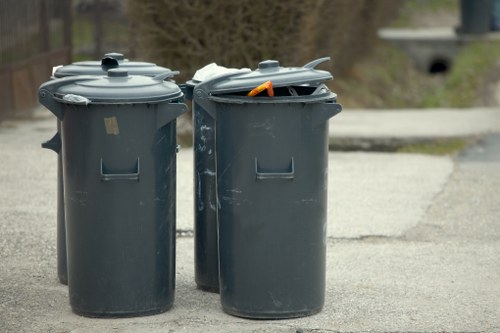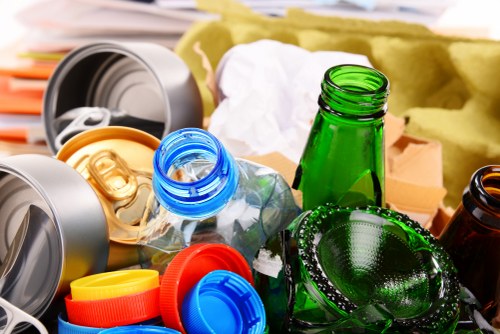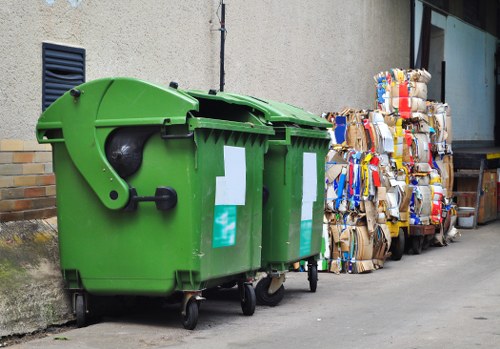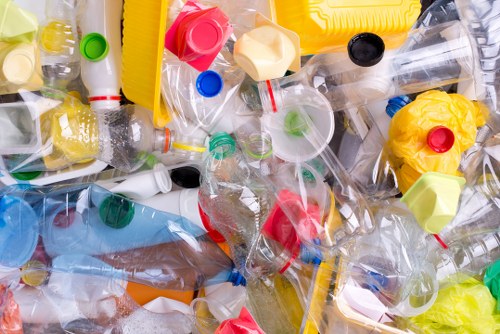Comprehensive Guide to Construction Waste Clearance in Brixton

Construction projects, whether large or small, generate a significant amount of waste. In Brixton, managing this construction waste clearance efficiently is crucial to maintaining a clean and sustainable environment. Proper waste management not only complies with local regulations but also promotes environmental responsibility.
Effective construction waste clearance involves the removal, recycling, and disposal of debris generated during construction activities. This process ensures that building sites remain safe and that waste does not negatively impact the surrounding community.
In Brixton, there are several reputable waste clearance services that specialize in handling construction debris. These companies offer comprehensive solutions tailored to the specific needs of each project, ensuring that waste is managed responsibly from start to finish.

Why Proper Construction Waste Clearance Matters
Proper construction waste clearance is essential for several reasons:
- Environmental Protection: Proper disposal and recycling reduce the environmental footprint of construction activities.
- Safety: Removing debris minimizes the risk of accidents on construction sites.
- Regulatory Compliance: Adhering to waste management laws helps avoid legal penalties.
- Cost Efficiency: Efficient waste management can lead to cost savings through recycling and reduced disposal fees.
In Brixton, where urban development is ongoing, maintaining these standards is particularly important to preserve the community's quality of life and urban aesthetics.

Types of Construction Waste
Construction sites produce various types of waste, each requiring specific handling methods:
- Concrete and Masonry: Often recycled for use in new construction projects.
- Wood: Can be repurposed or processed into mulch and other materials.
- Metals: Highly recyclable, including steel, aluminum, and copper.
- Plastics: Requires proper sorting to facilitate recycling.
- Hazardous Materials: Includes asbestos, paints, and solvents, which need specialized disposal.
Understanding the types of waste produced is the first step in effective waste clearance.

Steps in the Construction Waste Clearance Process
The construction waste clearance process typically involves several key steps:
- Assessment: Evaluating the amount and type of waste generated.
- Segregation: Sorting waste into recyclable, reusable, and disposable categories.
- Collection: Gathering the sorted waste for transportation.
- Recycling/Disposal: Processing recyclable materials and disposing of non-recyclable waste responsibly.
- Documentation: Keeping records to ensure compliance with local regulations.
Each step must be meticulously planned and executed to ensure efficient waste clearance and adherence to legal standards.

Choosing the Right Waste Clearance Service in Brixton
Selecting a reliable construction waste clearance service in Brixton involves considering several factors:
- Experience: Companies with a proven track record are more likely to handle waste efficiently.
- Compliance: Ensure the service adheres to all local waste management regulations.
- Recycling Practices: Choose services that prioritize recycling and environmentally friendly disposal methods.
- Cost: Compare pricing structures to find a service that offers value for money.
- Customer Reviews: Positive feedback indicates reliability and quality service.
In Brixton, several companies stand out for their commitment to excellence in waste clearance.
Benefits of Professional Construction Waste Clearance
Engaging professional waste clearance services offers numerous benefits:
- Time-Saving: Professionals handle all aspects of waste management, allowing you to focus on your project.
- Cost-Effective: Efficient waste handling can reduce overall project costs.
- Environmental Impact: Proper recycling and disposal minimize negative environmental effects.
- Safety: Reduces the risk of accidents by maintaining a clean and organized site.
- Compliance: Ensures that all waste management practices meet legal requirements.
These advantages make professional waste clearance a smart choice for any construction project in Brixton.
Recycling Initiatives in Brixton
Brixton is committed to sustainable development, and recycling plays a pivotal role in this initiative. Local waste clearance services collaborate with recycling facilities to ensure that as much waste as possible is repurposed. This not only reduces landfill usage but also supports the local economy by creating jobs in the recycling sector.
By prioritizing recycling, construction projects contribute to Brixton’s environmental goals, making the community greener and more sustainable.
Moreover, recycling construction waste can lead to significant cost savings, as materials can be reused on-site or sold to other projects, reducing the need for new materials.
Regulations Governing Construction Waste Clearance
Understanding and complying with local regulations is essential for effective construction waste clearance in Brixton. The Brixton Council has established guidelines to ensure that waste is managed responsibly:
- Waste Segregation: Mandatory separation of recyclable and non-recyclable materials.
- Permits: Certain types and quantities of waste may require special permits for disposal.
- Reporting: Regular reporting of waste management practices to regulatory authorities.
- Prohibited Items: Specific materials are banned from landfills and must be processed differently.
Adhering to these regulations not only ensures legal compliance but also promotes environmental stewardship.
Innovative Technologies in Waste Clearance
The waste clearance industry in Brixton is evolving with the adoption of innovative technologies. Advanced sorting systems improve the efficiency of waste segregation, ensuring higher rates of recycling. Additionally, digital tracking systems provide real-time data on waste management, enhancing transparency and accountability.
These technologies not only streamline operations but also contribute to more sustainable and environmentally friendly waste clearance practices.
Embracing such innovations positions Brixton as a leader in sustainable construction waste management.
Cost Factors in Construction Waste Clearance
The cost of construction waste clearance in Brixton depends on several factors:
- Volume of Waste: Larger projects produce more waste, increasing costs.
- Type of Waste: Hazardous or specialized waste requires more careful handling and disposal.
- Frequency of Clearance: Regular waste removal can be more cost-effective than sporadic services.
- Recycling Rates: Higher recycling rates can reduce disposal costs.
- Service Provider: Different companies offer varying pricing structures based on their services and expertise.
Understanding these factors can help in budgeting and selecting the most cost-effective waste clearance solution for your construction project.
Environmental Benefits of Recycling Construction Waste
Recycling construction waste offers numerous environmental benefits:
- Resource Conservation: Reduces the need for new raw materials.
- Energy Savings: Recycling often consumes less energy compared to producing new materials.
- Pollution Reduction: Minimizes pollution associated with extraction and processing of raw materials.
- Landfill Space: Decreases the amount of waste sent to landfills, extending their lifespan.
- Carbon Footprint: Lower emissions from recycling processes contribute to combating climate change.
These benefits highlight the importance of integrating recycling into construction waste management strategies.
Sustainable Practices in Construction Waste Management
Implementing sustainable practices in construction waste clearance ensures that waste management contributes positively to the environment and community. Key sustainable practices include:
- Source Reduction: Minimizing waste generation by optimizing resource use.
- Recycling and Reuse: Prioritizing the recycling and reuse of materials to reduce waste.
- Eco-Friendly Disposal: Choosing disposal methods that have minimal environmental impact.
- Green Procurement: Selecting materials that are sustainable and have lower environmental footprints.
- Training and Education: Ensuring that all stakeholders understand and adhere to sustainable waste management practices.
Adopting these practices not only benefits the environment but can also enhance the reputation of construction projects and companies involved.
Challenges in Construction Waste Clearance
Despite its importance, construction waste clearance faces several challenges:
- Cost Constraints: Budget limitations can affect the extent and quality of waste management.
- Awareness: Lack of awareness about proper waste management practices.
- Regulatory Hurdles: Navigating complex regulations can be time-consuming.
- Logistical Issues: Efficiently transporting and processing waste materials.
- Market Fluctuations: Changes in the recycling market can impact the viability of recycling certain materials.
Addressing these challenges requires strategic planning, investment in education, and collaboration between stakeholders.
Future Trends in Construction Waste Clearance
The future of construction waste clearance in Brixton is poised to embrace several emerging trends:
- Advanced Recycling Technologies: Implementing cutting-edge technologies to improve recycling rates.
- Circular Economy: Promoting a system where materials are reused and recycled continuously.
- Digital Solutions: Utilizing software and apps for better waste tracking and management.
- Green Building Standards: Increasing adherence to sustainability standards in construction projects.
- Community Engagement: Involving the community in waste management initiatives to foster collective responsibility.
These trends will shape the practices and policies surrounding construction waste clearance, making them more efficient and environmentally friendly.
Case Studies: Successful Waste Clearance Projects in Brixton
Several construction projects in Brixton have set benchmarks in effective waste clearance:
- Brixton Tower Redevelopment: Implemented a comprehensive recycling program, achieving a recycling rate of over 75%.
- Local School Renovations: Utilized eco-friendly materials and ensured proper disposal of hazardous waste.
- Community Center Construction: Partnered with local recycling facilities to manage construction waste efficiently.
These projects demonstrate the feasibility and benefits of dedicated waste management strategies in urban construction.
Choosing Sustainable Materials to Reduce Waste
One of the most effective ways to minimize construction waste is by selecting sustainable materials. Opting for materials that are recyclable, reusable, or have a lower environmental impact can significantly reduce the amount of waste generated.
Examples include:
- Recycled Steel: Durable and highly recyclable, reducing the need for new steel production.
- Bamboo: A renewable resource that can replace traditional wood in many applications.
- Recycled Plastic: Utilized in various construction components, reducing plastic waste.
- Low-VOC Paints: Environmentally friendly paints that minimize harmful emissions.
By integrating these materials, construction projects contribute to a more sustainable and efficient waste management system.
Employee Training in Waste Management
Proper waste clearance hinges on the knowledge and commitment of all team members. Providing training ensures that every individual involved in the construction project understands the importance of waste management and the procedures to follow.
Training programs typically cover:
- Waste Segregation Techniques: Properly sorting different types of waste.
- Safety Protocols: Ensuring safe handling and disposal of hazardous materials.
- Recycling Procedures: Educating about the recycling process and benefits.
- Regulatory Compliance: Understanding local waste management laws and guidelines.
Investing in employee training leads to more effective and compliant waste management practices.
Impact of Construction Waste on Brixton
The impact of construction waste on Brixton is multifaceted. Improper waste management can lead to environmental degradation, aesthetic issues, and health hazards. However, with effective waste clearance, these negative impacts can be mitigated.
Proper waste management preserves the beauty of Brixton’s urban landscape, ensures public health safety, and supports the community’s overall well-being. It also fosters a culture of sustainability and responsibility among residents and developers alike.
By prioritizing construction waste clearance, Brixton sets a positive example for other urban areas facing similar challenges.
How to Reduce Construction Waste
Reducing construction waste is a proactive approach that benefits both the environment and the bottom line. Key strategies include:
- Efficient Planning: Detailed project planning minimizes errors and material excess.
- Material Selection: Choosing materials that can be reused or recycled.
- Just-in-Time Delivery: Reducing material storage time to prevent damage and waste.
- Modular Construction: Prefabricating components to reduce waste on-site.
- Regular Audits: Monitoring waste generation to identify and address issues promptly.
Implementing these strategies leads to substantial waste reduction and enhanced project efficiency.
Benefits to the Community
Effective construction waste clearance delivers numerous benefits to the Brixton community:
- Cleaner Environment: Reduces litter and pollution, enhancing the area's aesthetic appeal.
- Healthier Living Conditions: Minimizes health risks associated with waste accumulation.
- Economic Growth: Recycling initiatives create jobs and stimulate the local economy.
- Community Engagement: Encourages residents to participate in sustainability efforts.
- Enhanced Property Values: Clean and well-maintained areas attract investment and increase property values.
These benefits underscore the importance of prioritizing construction waste clearance in community planning.
Environmental Policies Supporting Waste Clearance
The Brixton Council has implemented several environmental policies to support effective waste clearance:
- Mandatory Recycling: Enforcing recycling requirements for all construction projects.
- Waste Reduction Targets: Setting specific goals for reducing construction waste generation.
- Incentives: Offering financial incentives for projects that exceed waste management standards.
- Public Awareness Campaigns: Educating the community about the importance of waste clearance and recycling.
- Collaboration with Businesses: Partnering with local businesses to enhance waste management practices.
These policies provide a framework that guides construction projects towards more sustainable waste management practices.
Conclusion
Construction waste clearance in Brixton is a critical component of sustainable urban development. By adhering to effective waste management practices, leveraging recycling initiatives, and complying with local regulations, the negative impacts of construction can be significantly mitigated. Engaging professional waste clearance services ensures that construction projects contribute positively to the community and the environment.
Embracing sustainability not only benefits the present but also safeguards the future of Brixton, making it a cleaner, safer, and more prosperous place to live and work.
Contact us today to learn more about our construction waste clearance services and how we can assist your next project in Brixton.